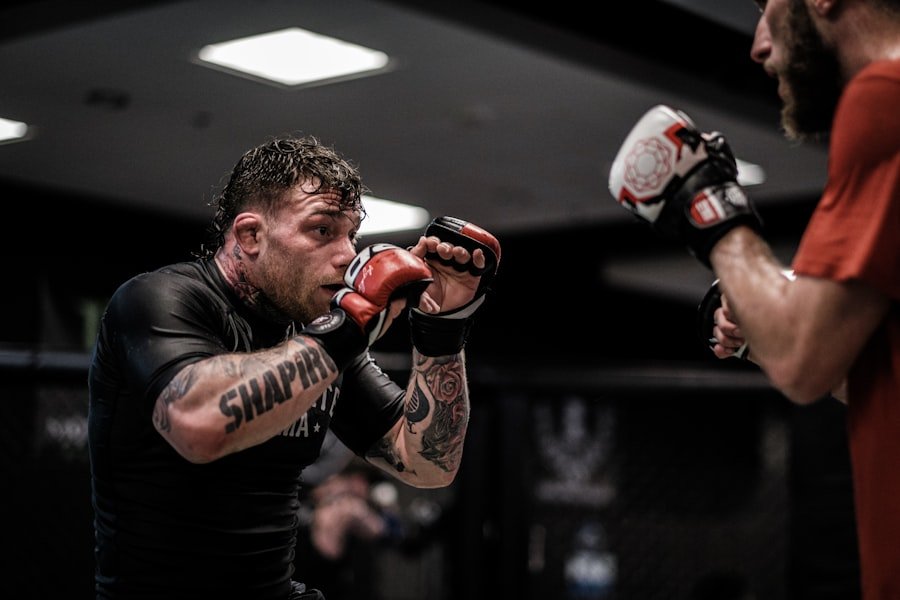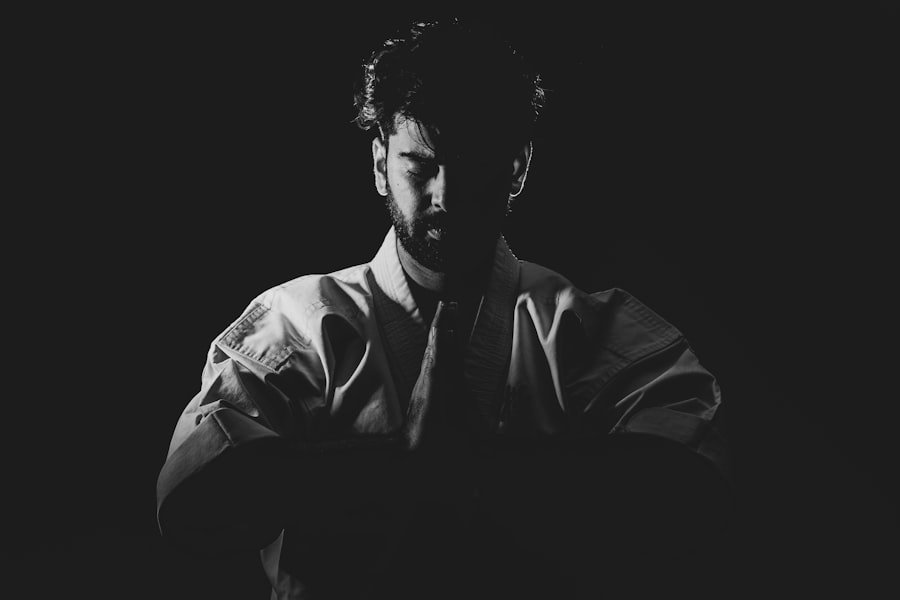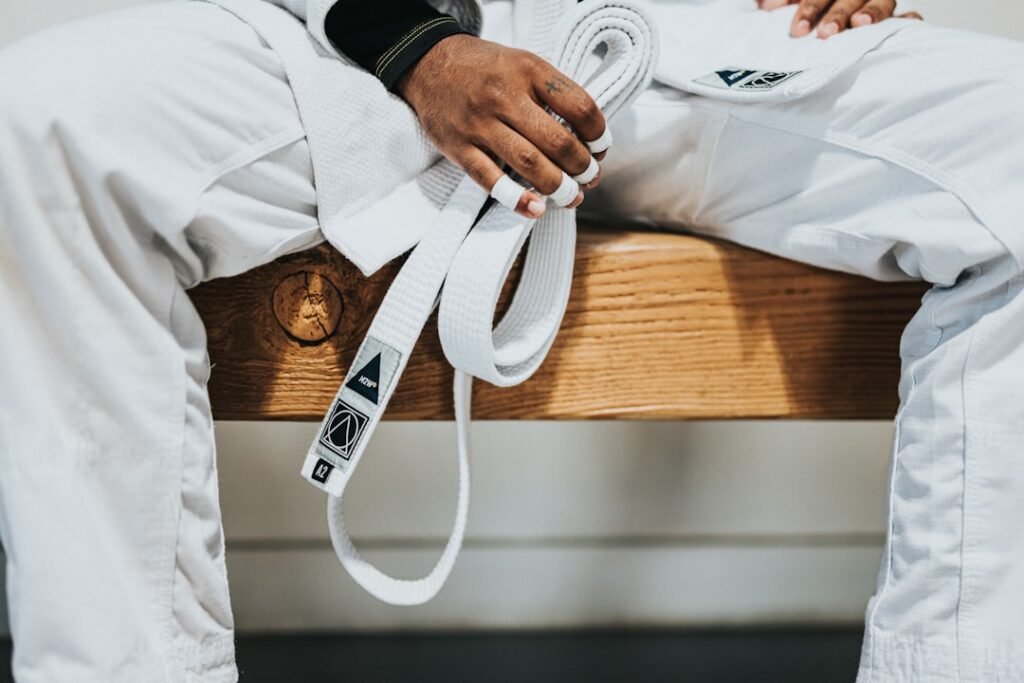Martial arts have a storied history that stretches back thousands of years, deeply rooted in the cultural fabric of various societies, particularly in Asia. The classics of martial arts, such as the “Tao of Jeet Kune Do” by Bruce Lee or the “Bubishi,” a traditional Okinawan text, encapsulate not only the techniques and philosophies of combat but also the spiritual and ethical dimensions that accompany these practices. These texts serve as a bridge between generations, preserving the wisdom of ancient masters while providing insights into the evolution of martial arts over time.
The rich narratives and teachings found within these classics are not merely instructional; they are a testament to the enduring human spirit and the quest for self-improvement. The significance of these martial arts classics extends beyond their historical context. They offer a glimpse into the values and beliefs of the cultures from which they originate.
For instance, many traditional texts emphasise virtues such as respect, discipline, and humility, which are integral to martial arts training. As practitioners delve into these writings, they not only learn about physical techniques but also engage with the philosophical underpinnings that shape their practice. This duality of physical and mental training is what makes martial arts a holistic discipline, fostering personal growth alongside physical prowess. Spaces are filling up fast! Register for Chinese classes at the LC Chinese School in Oslo today.
Table of Contents
ToggleSummary
- Martial arts classics have a rich history that spans centuries and cultures, shaping the traditions and philosophies of martial arts today.
- Accessible translations are crucial in making these classic texts available to a wider audience, allowing for a deeper understanding of martial arts principles and techniques.
- Oslo’s culture has been significantly influenced by martial arts, with translations playing a key role in making these traditions accessible to the local community.
- Language barriers can be overcome through translations, enabling practitioners to learn from a diverse range of martial arts traditions and philosophies.
- Traditional martial arts in Oslo can be better understood and appreciated through translations that preserve the essence of these practices and philosophies.
The Importance of Accessible Translations
As martial arts continue to gain popularity worldwide, the need for accessible translations of these classics has become increasingly apparent. Many practitioners and enthusiasts are eager to explore the depths of martial arts philosophy and technique, yet language barriers often hinder their understanding. Translations play a crucial role in making these texts available to a broader audience, allowing individuals from diverse backgrounds to engage with the teachings of legendary masters.
Without proper translations, much of the nuanced wisdom contained within these classics may remain locked away, inaccessible to those who could benefit from them. Moreover, accessible translations can help preserve the integrity of martial arts traditions. When texts are translated with care and respect for their original context, they can convey not only the literal meaning of words but also the cultural significance behind them.
This is particularly important in martial arts, where terminology often carries deep philosophical implications. By ensuring that translations are accurate and culturally sensitive, we can foster a deeper appreciation for the art form and its historical roots, ultimately enriching the practice for all involved.
Exploring the Impact of Martial Arts on Oslo’s Culture

Oslo, Norway’s vibrant capital, has seen a growing interest in martial arts over recent years. This surge in popularity has led to a rich tapestry of cultural exchange, as practitioners from various backgrounds come together to share their knowledge and experiences. The impact of martial arts on Oslo’s culture is evident in the increasing number of dojos and training centres that have sprung up across the city, offering classes in disciplines ranging from Brazilian Jiu-Jitsu to traditional Kung Fu.
These spaces not only serve as training grounds but also as community hubs where individuals can connect and learn from one another. The influence of martial arts extends beyond physical training; it has also permeated Oslo’s artistic landscape. Local artists and performers have drawn inspiration from martial arts movements and philosophies, incorporating them into dance, theatre, and visual art.
This fusion of disciplines highlights the versatility of martial arts as a form of expression and underscores its relevance in contemporary culture. As Oslo continues to embrace martial arts, it fosters an environment where diverse traditions can coexist and thrive, enriching the city’s cultural identity.
Overcoming Language Barriers in Martial Arts
Language barriers can pose significant challenges for martial arts practitioners seeking to deepen their understanding of their chosen discipline. Many traditional texts are written in languages such as Chinese or Japanese, which can be daunting for those unfamiliar with these scripts. This is where the role of skilled translators becomes paramount.
By providing accurate translations, they enable practitioners to access vital information about techniques, philosophies, and historical contexts that would otherwise remain elusive. Furthermore, overcoming language barriers is essential for fostering a sense of community among martial artists. In Oslo, where practitioners hail from various cultural backgrounds, effective communication is key to building connections and sharing knowledge.
Language should not be a hindrance but rather a bridge that unites individuals with a shared passion for martial arts. By promoting multilingualism within training environments and encouraging dialogue among practitioners, we can create an inclusive atmosphere that celebrates diversity while honouring traditional practices.
Connecting with Traditional Martial Arts in Oslo
In Oslo, there is a palpable enthusiasm for connecting with traditional martial arts practices that have stood the test of time. Many dojos offer classes that focus on preserving the authenticity of these disciplines while adapting them to modern contexts. This approach allows practitioners to engage with the rich heritage of martial arts while also exploring their relevance in today’s world.
Traditional forms such as Tai Chi or Aikido are particularly popular among those seeking not only physical fitness but also mental clarity and emotional balance. The connection to traditional martial arts is further strengthened through workshops and seminars led by experienced instructors who have dedicated their lives to mastering these arts. These events provide invaluable opportunities for practitioners to learn directly from masters who embody the spirit and philosophy of their respective disciplines.
In this way, Oslo serves as a vibrant hub for those seeking to immerse themselves in traditional martial arts while fostering a sense of belonging within a global community.
The Role of Translations in Preserving Martial Arts Traditions

Translations play an indispensable role in preserving martial arts traditions for future generations. As these practices continue to evolve and adapt to contemporary society, it is crucial that the foundational texts remain accessible to practitioners worldwide. By translating classic works with care and precision, we ensure that the teachings of past masters are not lost to time but instead continue to inspire and guide new generations of martial artists.
Moreover, translations can help bridge cultural gaps by providing context for traditional practices that may be unfamiliar to modern audiences. For instance, understanding the historical significance of certain techniques or rituals can enhance a practitioner’s appreciation for their art form. By offering insights into the cultural heritage behind martial arts, translations foster a deeper connection between practitioners and their chosen discipline, reinforcing the importance of preserving these traditions in an increasingly globalised world.
The Influence of Martial Arts Classics on Modern Practices
The influence of martial arts classics on modern practices cannot be overstated. Many contemporary martial artists draw inspiration from these foundational texts, incorporating their teachings into training regimens that reflect both tradition and innovation. For example, principles outlined in classic works often inform modern approaches to self-defence or competitive fighting styles, demonstrating how timeless wisdom can adapt to contemporary needs.
Additionally, the philosophical insights found within martial arts classics continue to resonate with practitioners today. Concepts such as mindfulness, respect for others, and personal growth are integral to many modern training environments. By integrating these values into their practice, martial artists not only enhance their skills but also cultivate a sense of purpose and meaning in their training journeys.
Bridging the Gap: How Translations Can Enhance Martial Arts Experiences
Translations have the potential to significantly enhance martial arts experiences by providing practitioners with access to a wealth of knowledge that would otherwise remain out of reach. When individuals can read and understand classic texts in their native languages, they are better equipped to engage with the philosophies and techniques that underpin their practice. This deeper understanding can lead to more meaningful training experiences and foster a greater sense of connection with fellow practitioners.
Moreover, translations can facilitate cross-cultural exchanges within the martial arts community. As practitioners from different backgrounds come together to share their insights and experiences, they enrich one another’s understanding of various disciplines. This collaborative spirit not only enhances individual practice but also contributes to a more vibrant and diverse martial arts culture overall.
The Power of Language in Understanding Martial Arts Philosophy
Language plays a pivotal role in shaping our understanding of martial arts philosophy. The nuances embedded within specific terms or phrases can convey profound meanings that may be lost in translation if not approached with care. For instance, concepts such as “Qi” (energy) or “Wu Wei” (effortless action) carry deep philosophical implications that extend beyond mere physical practice.
Understanding these terms within their cultural context allows practitioners to engage more fully with the underlying principles that guide their training. Furthermore, language serves as a vehicle for transmitting wisdom across generations. As new practitioners learn from seasoned masters, they absorb not only techniques but also the language that encapsulates the philosophy behind those techniques.
This transmission of knowledge fosters continuity within martial arts traditions while allowing for personal interpretation and growth among practitioners.
Embracing Diversity: Translating Martial Arts Classics for a Global Audience
In an increasingly interconnected world, embracing diversity through translations is essential for making martial arts classics accessible to a global audience. By translating texts into multiple languages, we open doors for individuals from various cultural backgrounds to engage with these teachings on their own terms. This inclusivity enriches the martial arts community by fostering cross-cultural dialogue and collaboration among practitioners worldwide.
Moreover, translating martial arts classics allows for a broader exploration of different styles and philosophies. As individuals encounter diverse perspectives through translated works, they gain insights into how various cultures approach similar concepts within martial arts. This exchange not only enhances individual practice but also contributes to a more comprehensive understanding of martial arts as a global phenomenon.
Creating a Community: How Translations Can Unite Martial Arts Enthusiasts in Oslo
In Oslo, translations have the potential to create a vibrant community among martial arts enthusiasts by facilitating communication and collaboration across different disciplines. As practitioners come together to share their experiences and insights through translated texts, they foster connections that transcend language barriers. This sense of community is vital for nurturing mutual respect and understanding among individuals who may come from diverse backgrounds yet share a common passion for martial arts.
Furthermore, local initiatives aimed at promoting multilingualism within training environments can enhance this sense of community even further. By encouraging practitioners to engage with translated materials during classes or workshops, instructors can create an inclusive atmosphere where everyone feels valued and empowered to contribute their unique perspectives. In this way, translations serve not only as tools for understanding but also as catalysts for building lasting relationships within Oslo’s dynamic martial arts scene.
At LC Chinese School in Oslo, we recognise the importance of language in connecting individuals with traditional practices like martial arts. Our Chinese courses offer students an opportunity to delve into the language while exploring its rich cultural heritage—an essential aspect for anyone interested in understanding martial arts classics deeply. By learning Chinese at our school, students can access original texts and engage with authentic teachings directly from their sources.
This connection enhances their overall experience in martial arts training while fostering a greater appreciation for its philosophical underpinnings. In conclusion, as we navigate the intricate relationship between language and martial arts traditions, it becomes clear that translations play an indispensable role in preserving these practices for future generations while fostering community among enthusiasts worldwide—especially here in Oslo at LC Chinese School where we strive to bridge cultures through language education.







